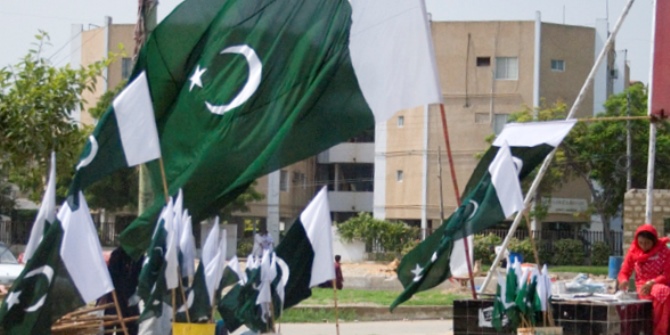 In August, Kerala was devastated by floods and landslides. At least 350 people died and 220,000 were left homeless. As the Indian Government vows to rebuild the state, Gayathri D Naik argues that to prevent another climate catastrophe, both the region and the country must reconceptualise not just how they see development but nature itself.
In August, Kerala was devastated by floods and landslides. At least 350 people died and 220,000 were left homeless. As the Indian Government vows to rebuild the state, Gayathri D Naik argues that to prevent another climate catastrophe, both the region and the country must reconceptualise not just how they see development but nature itself.
 Looking out to sea in Alappuzha, Kerala | Credit: Abhijith P, Unsplash
Looking out to sea in Alappuzha, Kerala | Credit: Abhijith P, Unsplash
The Indian state of Kerala experienced the worst floods and landslides in its recent history in August this year. Torrential monsoon rains left the state facing an average of 37.5 per cent more rainfall than normal, and with energy companies not releasing water from some of the 35 dams in the region before the downpour, water engulfed the state in just a matter of days.
Over two months on people are still living in flood-affected areas with a lack of basic services. With stretches of road and thousands of homes destroyed, either fully or partially, the redevelopment of ‘God’s Own Country’ (as Kerala is known) must begin, an enormous task already recognised by the Indian government. In the aftermath of the floods, the Minister for Tourism, KJ Alphons, declared that the Government will “re-build Kerala.”
Development in the anthropogenic era: Dams, the temples of modern India
The dominant concept of development worldwide, which prioritises the needs of human beings alone rejecting an eco-friendly approach, has prevailed in a small state like Kerala. In Kerala, forest lands, paddy fields and water bodies have all been reclaimed to address the needs of an increasing population in general and growing urbanisation in particular. Out of 44 rivers flowing through the state, most have been dammed for irrigation and hydroelectric power generation.
The state also boasts to have one of the highest arch dams in Asia, the Idukki dam. It is this dam that it has been reported by local experts to be a major contributing factor to the floods, as water was only released from it when the rains (as predicted) intensified. Kerala also has one of the oldest serving gravity dams in the world, the Mullaperiyar Dam. This dam has been at the centre of controversy following the floods as the Kerala Government has blamed its neighbour Tamil Nadu for not releasing water from it in the run-up to the devastating floods. The case is in court.
Dams were once acclaimed to be the temples of modern India by the first Prime Minister of India, Jawaharlal Nehru. Dams are essential to industry, irrigation and generating energy and have proved to be useful for controlling floods and providing a reliable source for clean drinking water. But the unsustainable construction of dams over rivers in the wake of the floods should be seen as disastrous to both the river as well as their developers. An example of this unsustainable level of construction is the River Narmada which has 200 completed dams on her 1312 km stretch.
Reconceptualising how local and national governments think of rivers in a developmental context shouldn’t be too challenging in an Indian context. In India, rivers are considered holy and are respected as Goddesses, granting them the status of mothers. However, these holy rivers are dammed for irrigation and are left as a source of power generation by the State on one side, and as a depository for the pollution created by vast populations and industries on the other side.
But change is afoot in some parts of the country. Recently, the Uttarakhand High Court, in the Himalayas, attributed ‘legal personality’ on the rivers Ganga and Yamuna that flow through several North Indian States. Following the landmark New Zealand Bill ‘Te Awa Tupua’ (Whanganui River Claims Settlement 2017) that granted ‘legal personality’ to a Maori river, the Uttarakhand High Court ensured that the State was duty bound to perform a pastoral role on the river, meaning that the river has to be conserved and protected. Such laws help citizens think of a river’s right to flow, and therefore in a more eco-centric way to development. There is resistance to this development in India however with the Indian Supreme Court opposing the implementation of the High Court’s decision.
Rebuilding Kerala with an eco-centric approach
Thankfully there already exists a basis for a new eco-centric approach to development thinking in Kerala. The Expert Committee Report on the South Indian mountain range, the Western Ghats, headed by Professor Madhav Gadgil, has highlighted the need to protect the biodiversity of the mountain range by regulating development activities in the area and implementing a complete ban on activities in certain eco-sensitive areas. Certain politicians, industrialists and plantation farmers however challenged this report, limiting the options of its implementation. Had the report been implemented as a conservation measure for protecting the biodiversity and ecosystem of the Biodiversity hotspot, it is likely that the magnitude of this natural disaster in the hillocks of Kerala would, to an extent, have been mitigated.
Proposed projects like the Athirampally dam and Aranmula Airport must now be delayed. The latest completed amusement park in the northern Kerala, which was responsible for creating landslides, should also be closed down. Paddy fields must stop being converted to plain lands for airport and residential complexes and environmental laws, such as the Environmental Protection Act 1986, which been watered down, needs strengthening.
These floods must be a trigger for rethinking the idea of development. Blocking the course of a flowing river by constructing dams in the name of hydroelectric power projects and irrigation has contributed to the hazardous situation Kerala now finds itself in. Industry-led development is, of course, essential, but if August’s devastation is to teach us anything, it is that development – and in this case, the redevelopment of Kerala – should not be at the cost of nature.
This article gives the views of the author, and not the position of the South Asia @ LSE blog, nor of the London School of Economics. Please read our comments policy before posting.
 Gayathri D Naik is a Doctoral Candidate at School of Law, at SOAS, University of London. She holds BAL.LLB (Government Law College, Ernakulum), MPA (Indira Gandhi Open University) and LLM (South Asian University). She is also a Commonwealth Scholar. Her Doctoral Research looks into equity and groundwater issues in India.
Gayathri D Naik is a Doctoral Candidate at School of Law, at SOAS, University of London. She holds BAL.LLB (Government Law College, Ernakulum), MPA (Indira Gandhi Open University) and LLM (South Asian University). She is also a Commonwealth Scholar. Her Doctoral Research looks into equity and groundwater issues in India.








Yes what you have written is the crux of the matter. Yes any development for that matter should always be adaptable to the environment. We cannot live in this planet any more if you don’t take care of nature. The notion of development has been so badily skewed on to wrong path. I think biggest take way would be learn from mistakes and protect ecosystem .
I cannot thank you enough for the blog post. Great.